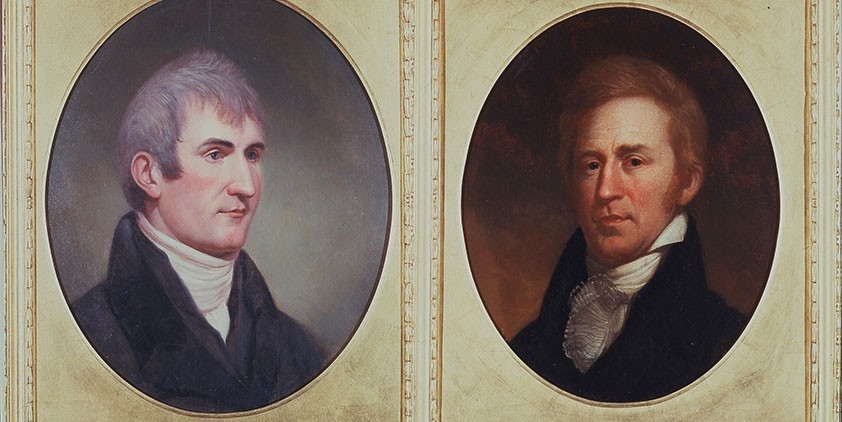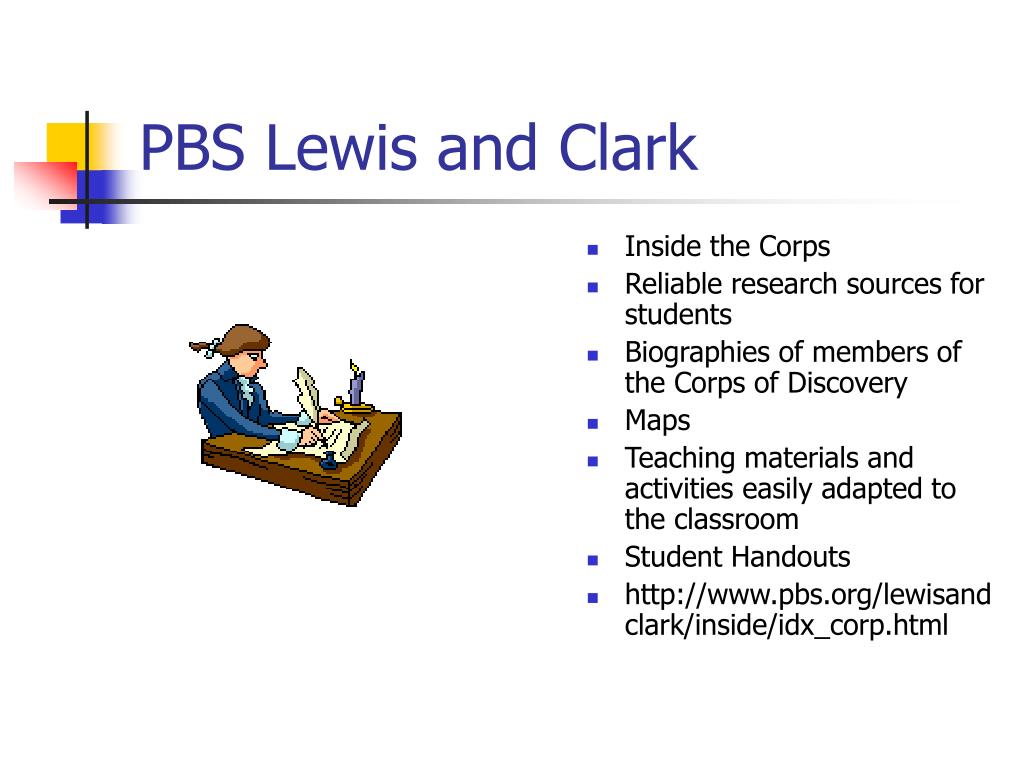

This was no easy task due to Gass’s poor writing and meager vocabulary. When the expedition returned in 1806, his friends encouraged him to turn his notes into a book documenting the journey. He logged what the expedition faced each day and how they made their trek across the country. With his promotion to sergeant, Gass was tasked to keep a detailed journal during the entire trip.
#LEWIS AND CLARK CORPS OF DISCOVERY PBS SERIES#
Gass then fashioned wagons to portage the canoes 18 miles overland around a series of falls on the Missouri River. He also hewed dugout canoes at Mandan (North Dakota) and Canoe Camp (Idaho). His skills continued to be put to use as he oversaw the building of the winter camps at Camp Dubois (Illinois), Fort Mandan (North Dakota), and Fort Clatsop (Oregon). Charles Floyd, in August 1804, the men elected Gass to replace him as sergeant. Gass, however, went directly to Lewis who convinced Bissell to let him join the mission.Īt the start of the expedition, Gass was a private and used his outdoor and carpentry skills to aid the mission. He wanted to keep his skilled carpenter around.

Gass volunteered, knowing the adventures and opportunities it offered but Bissell denied it.

The Army ordered Bissell to provide eight men for the upcoming expedition. Meriwether Lewis to lead a group of Soldiers into the territory and Lewis appointed former lieutenant William Clark as his second in command. In 1803, President Thomas Jefferson purchased the Louisiana Territory from France and ordered an expedition to explore the newly acquired land.

Russel Bissell’s company at Kaskaskia, Illinois, and served as a carpenter, helping build winter quarters and repairing the fort. After his discharge, Gass reenlisted as soon as he could in May 1801. He rejoined the Army in 1799, but the Army discharged him shortly after the threat of war with France faded. He spent two years as an apprentice in Mercersburg, Pennsylvania, and worked on various projects in the area until 1799. He served under Wayne for two years until 1794, when Gass left the Army to learn another skill he became famous for, carpentry. In 1792, Gass joined the Army to fight against Native Americans in the Northwest under Maj. Despite his limited education he documented one of the most extraordinary adventures in U.S. As a result, Gass did not learn to fully read or write until he was an adult. But education was the last thing on his mind and instead, he spent much of his youth traveling and adventuring in the countryside. However, Gass went to live with his grandfather for several years to receive an education. Moving often, his family finally settled in Maryland in 1777. Patrick McLene Gass was born in Fall Springs, Pennsylvania, in June 1771, but did not stay there long. His journal from the journey was the first published account of the expedition and coined the name, “Corps of Discovery.” An accomplished carpenter and explorer, he participated in the Lewis and Clark expedition and documented the entire trip. Gass served 20 years in the Army, fighting in the War of 1812 and serving on the frontier. However, his written work lived on much longer than anything he built. Instead, they would have praised him for his skills in the wilderness and carpentry. The Oregon Historical Society.Įarly in life, few would have described Sgt.


 0 kommentar(er)
0 kommentar(er)
